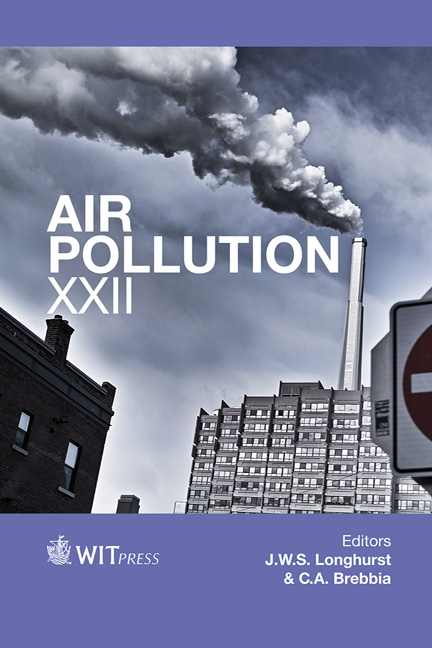An Attempt To Identify Stratospheretroposphere Transport Of Ozone On The Basis Of Beryllium (7Be) Activity Concentration
Price
Free (open access)
Transaction
Volume
183
Pages
12
Page Range
377 - 388
Published
2014
Size
756 kb
Paper DOI
10.2495/AIR140311
Copyright
WIT Press
Author(s)
E. Krajny, L. Osrodka, M. Wojtylak, M. Pajek & B. Michalik
Abstract
The aim of this study was to identify a situation of stratospheric to tropospheric air mass transport (STT), and then attempt to answer the question whether beryllium (7Be) can be a good marker of stratospheric ozone (O3) origin in the surface boundary layer of the atmosphere (SL) and its role in the tropospheric ozone budget. The sets of data covering the yearly period are examined such as: the daily activity concentration of 7Be and lead (210Pb), the hourly concentration of ground-level ozone O3 and the meteorological parameters measured in SL in a meteorological station located in the town of Raciborz in southern Poland. The data obtained had undergone statistical and Fourier analysis. The data obtained had undergone Fourier analysis in order to eliminate the periodicity associated with, inter alia, the annual variability of solar radiation incoming to the Earth’s surface. Then, based on statistical analysis potential days in which very likely was the occurrence of the so-called phenomenon \“stratospheric intrusion” (SI) were identified. The selected periods were then analysed in terms of synoptic assessment of the impact of meteorological conditions on levels of 7Be and O3. For the selected case a detailed analysis was carried out based on the surface and upper air observations, satellite remote sensing, profile data and ground-level ozone. The use of trace methods based on the identification of concentrations of naturally occurring radionuclides as 7Be and 210Pb in SL of the atmosphere is complementary to the meteorological analysis for the identification of vertical inflow of air masses rich in ozone from stratosphere to troposphere.
Keywords
beryllium (7Be), ground-level ozone (O3), meteorology, surfacelayer, satellite remote sensing, stratospheric-tropospheric transport (STT),stratospheric intrusion (SI).





